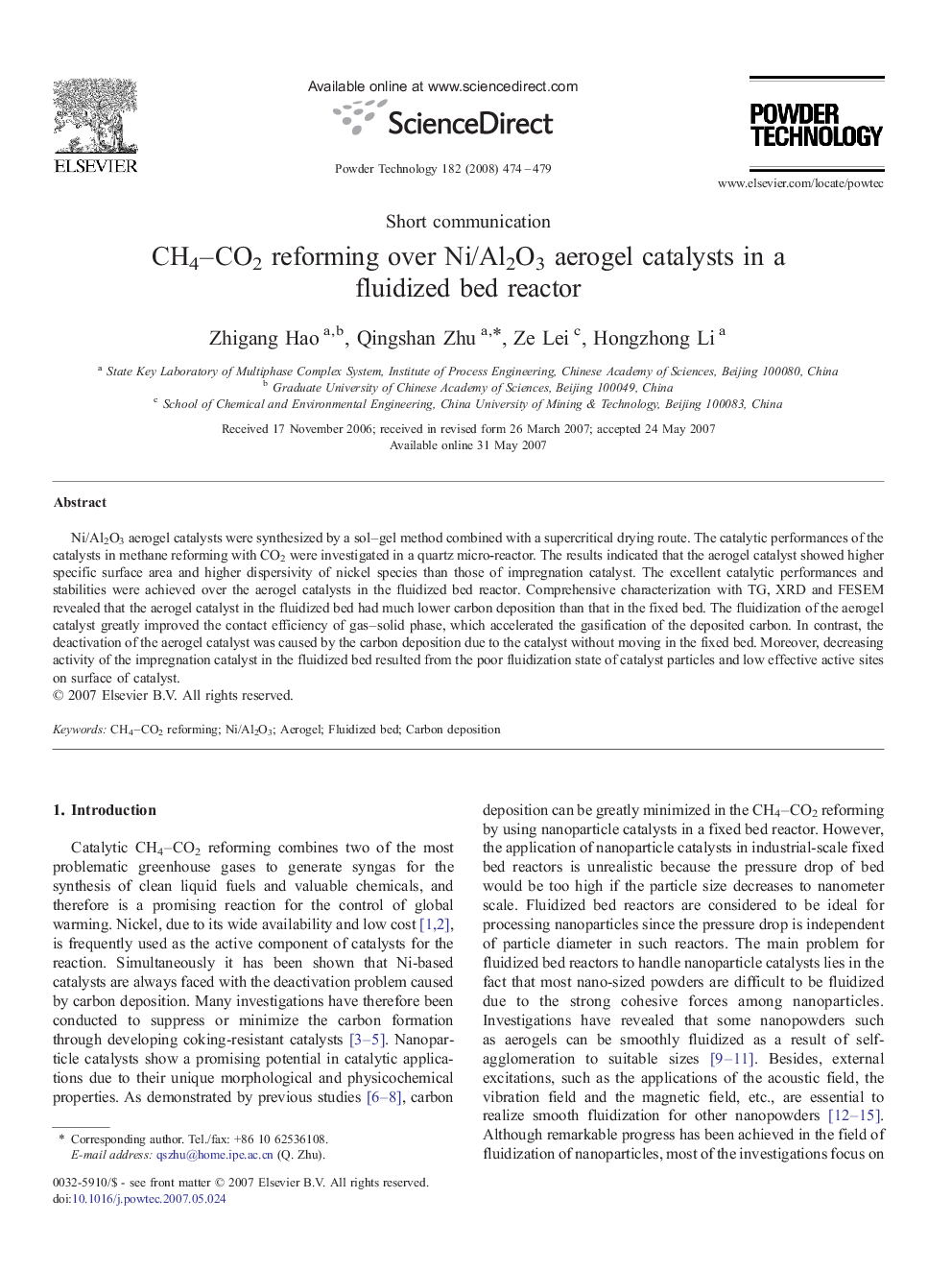| Article ID | Journal | Published Year | Pages | File Type |
|---|---|---|---|---|
| 239014 | Powder Technology | 2008 | 6 Pages |
Ni/Al2O3 aerogel catalysts were synthesized by a sol–gel method combined with a supercritical drying route. The catalytic performances of the catalysts in methane reforming with CO2 were investigated in a quartz micro-reactor. The results indicated that the aerogel catalyst showed higher specific surface area and higher dispersivity of nickel species than those of impregnation catalyst. The excellent catalytic performances and stabilities were achieved over the aerogel catalysts in the fluidized bed reactor. Comprehensive characterization with TG, XRD and FESEM revealed that the aerogel catalyst in the fluidized bed had much lower carbon deposition than that in the fixed bed. The fluidization of the aerogel catalyst greatly improved the contact efficiency of gas–solid phase, which accelerated the gasification of the deposited carbon. In contrast, the deactivation of the aerogel catalyst was caused by the carbon deposition due to the catalyst without moving in the fixed bed. Moreover, decreasing activity of the impregnation catalyst in the fluidized bed resulted from the poor fluidization state of catalyst particles and low effective active sites on surface of catalyst.
Graphical abstractCO2–CH4 reforming over Ni/Al2O3 aerogel catalysts was investigated in a micro-fluidized bed reactor. The excellent catalytic performances of aerogel catalysts were achieved since only a limited amount of carbon deposited on the surface of catalysts. The fluidization of aerogel catalysts with porous agglomerates was effective to improve the contact efficiency of gas–solid phase, thus less carbon accumulated.Figure optionsDownload full-size imageDownload as PowerPoint slide
